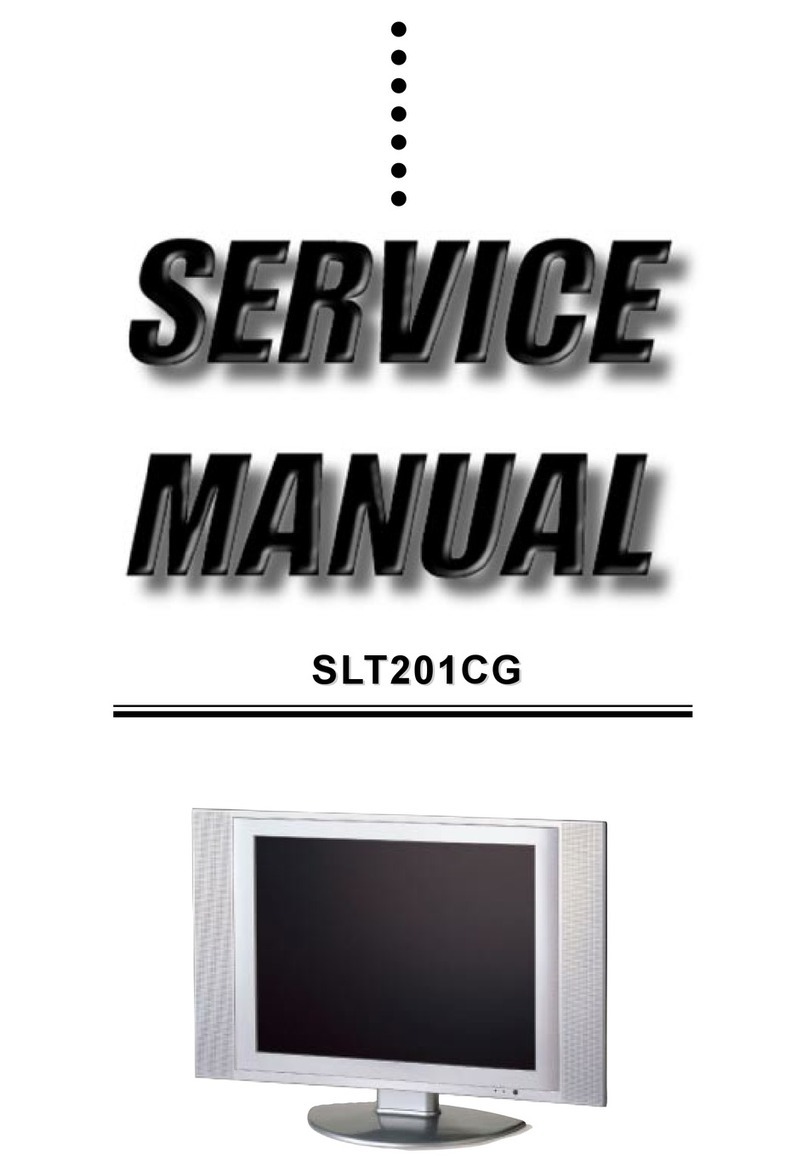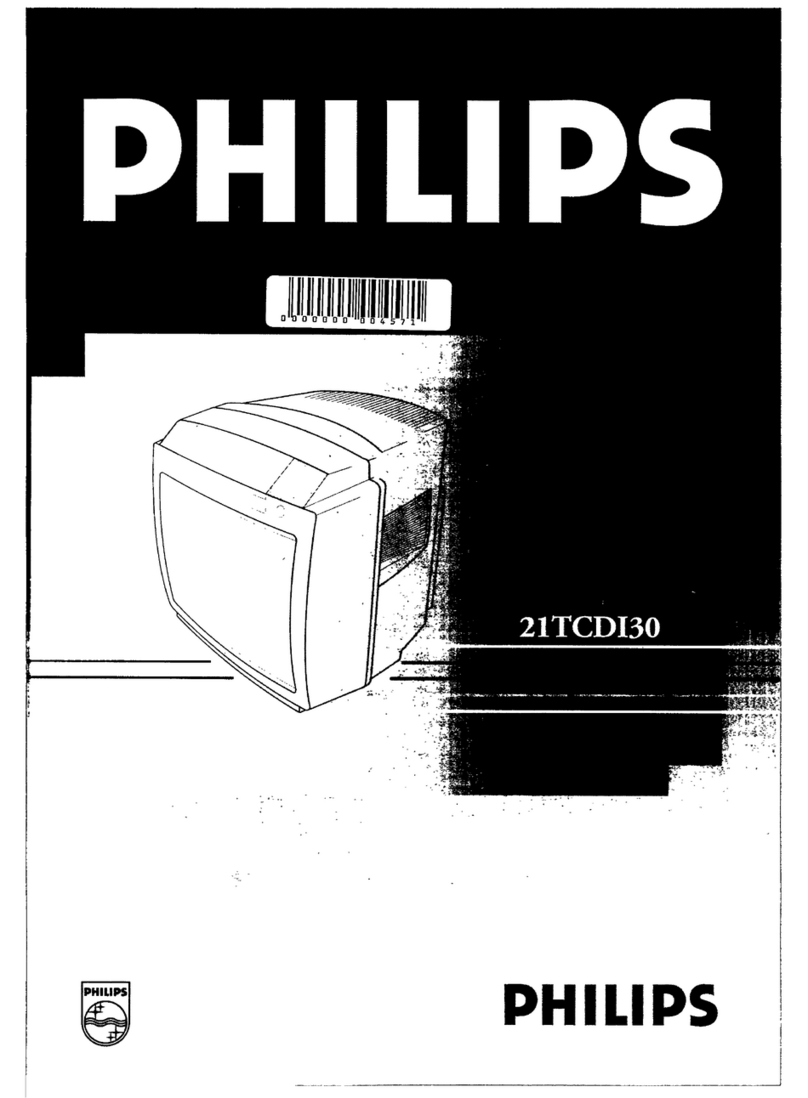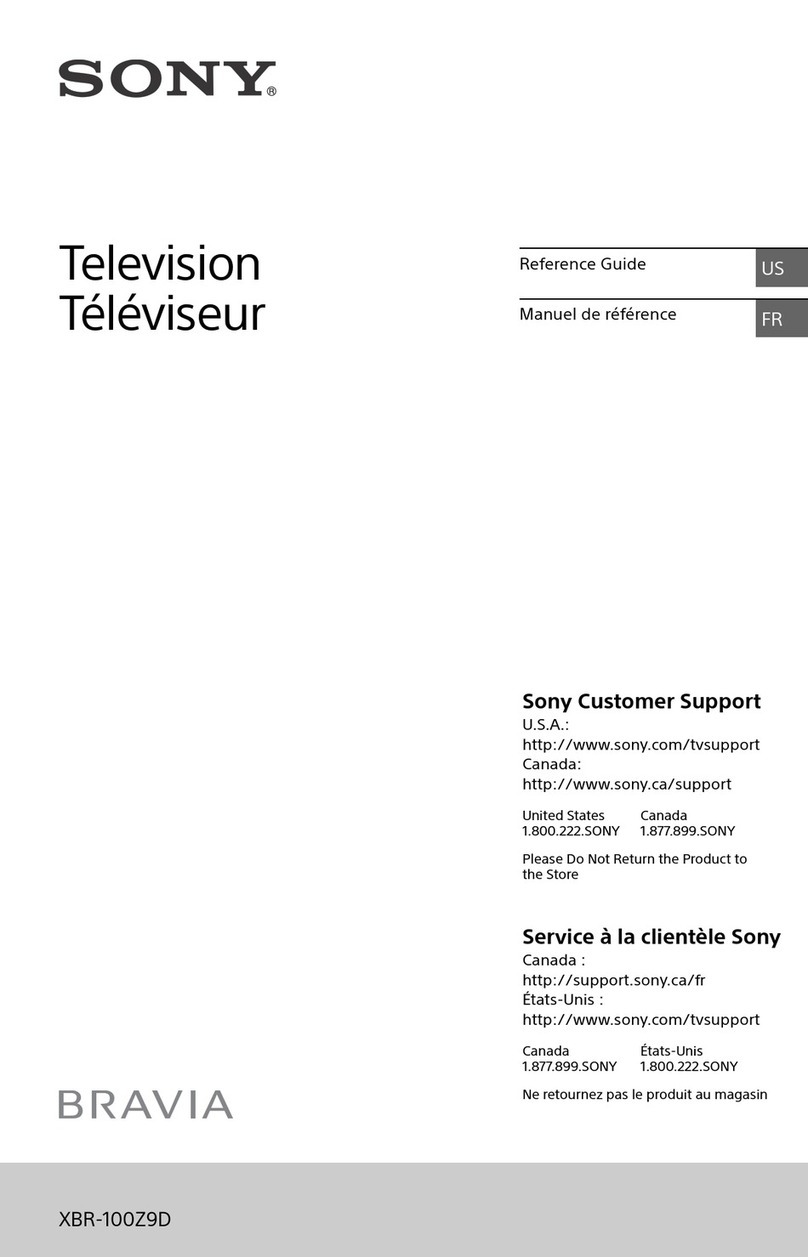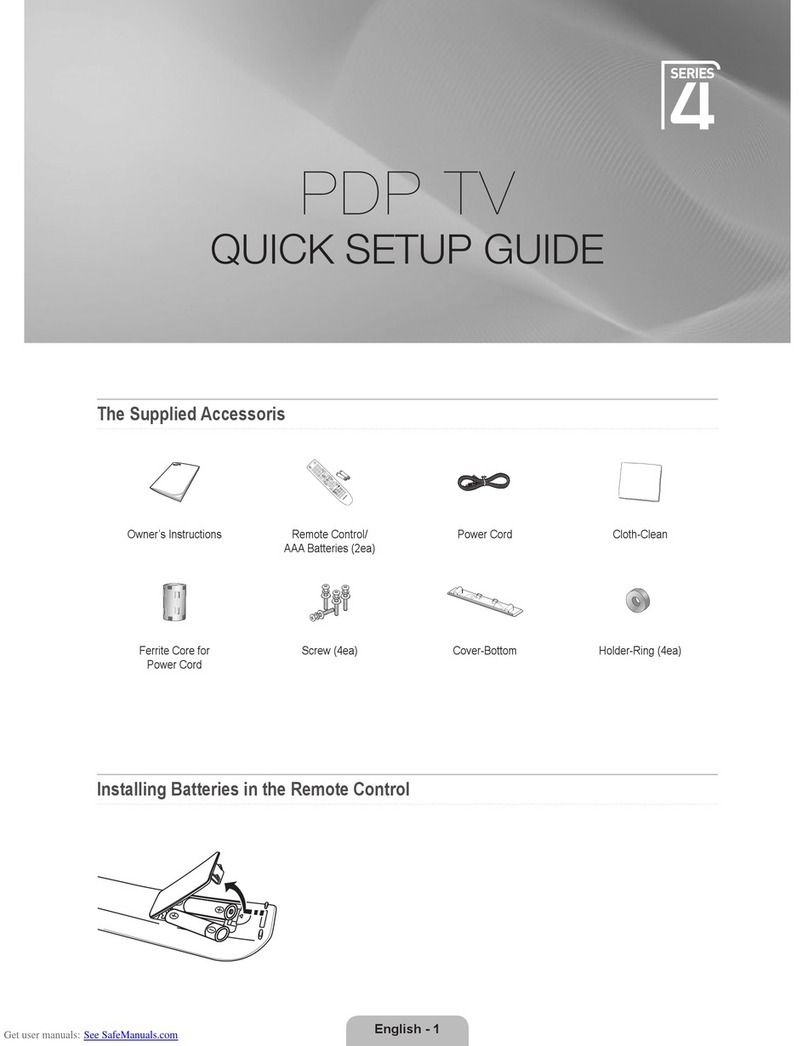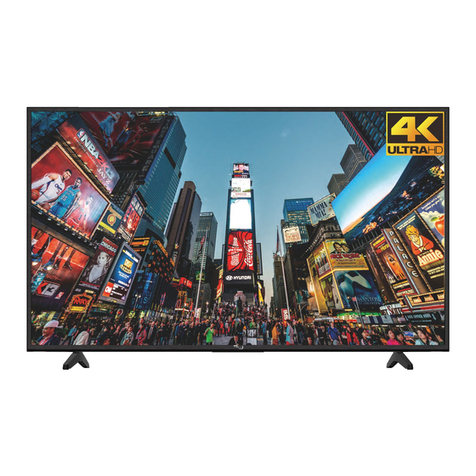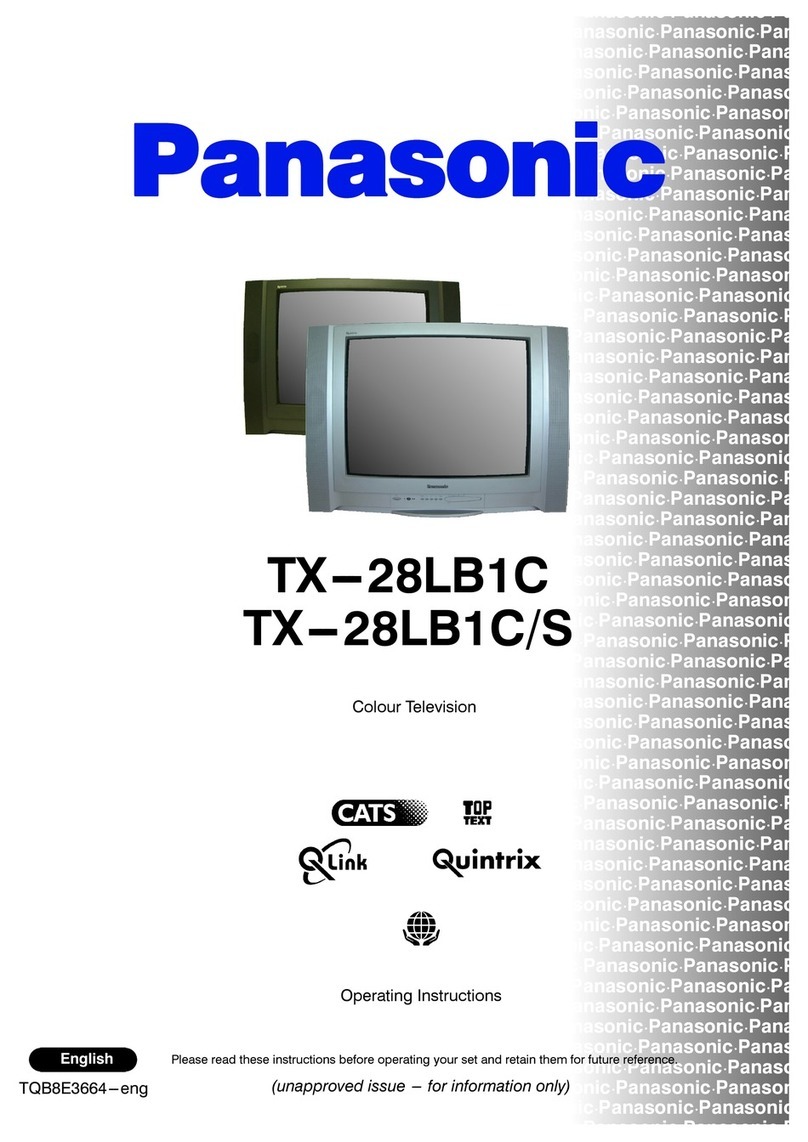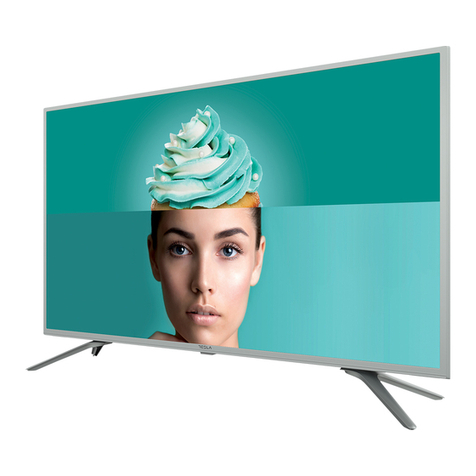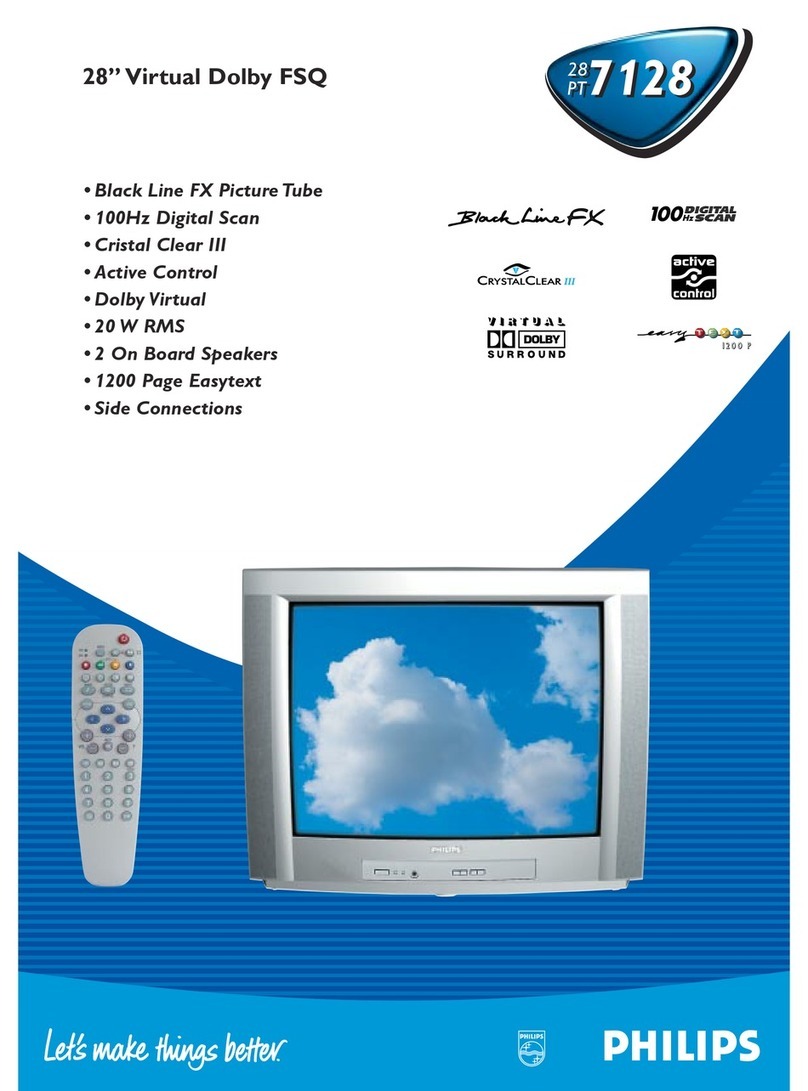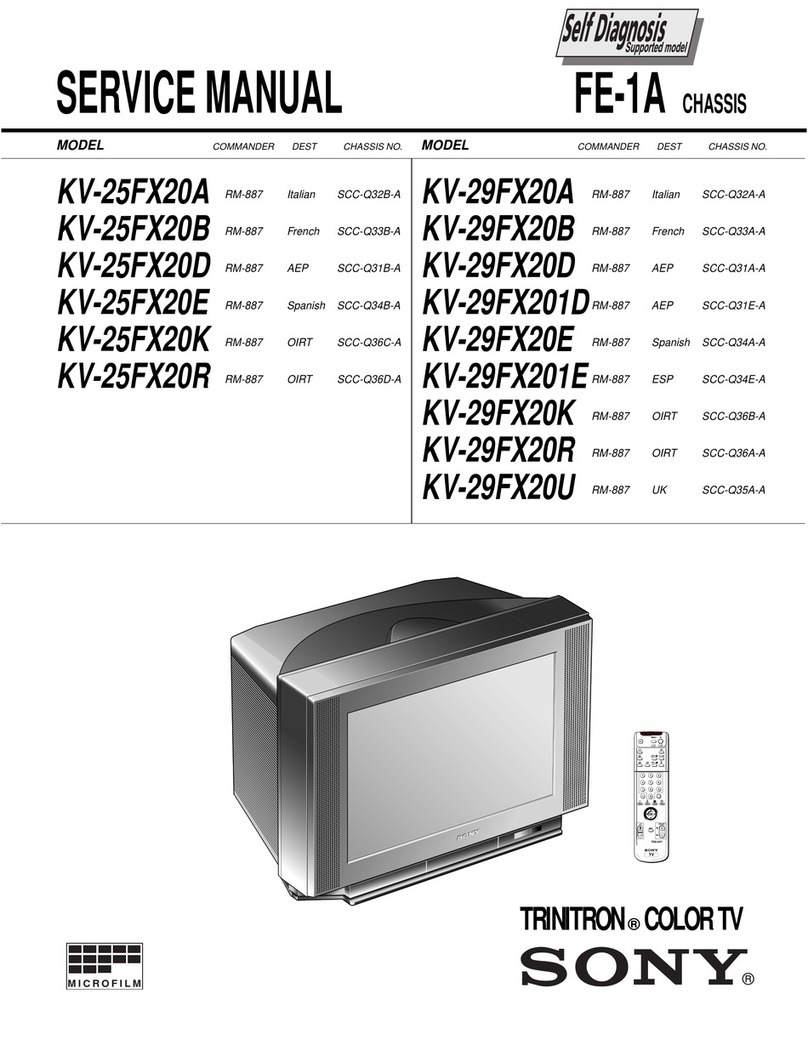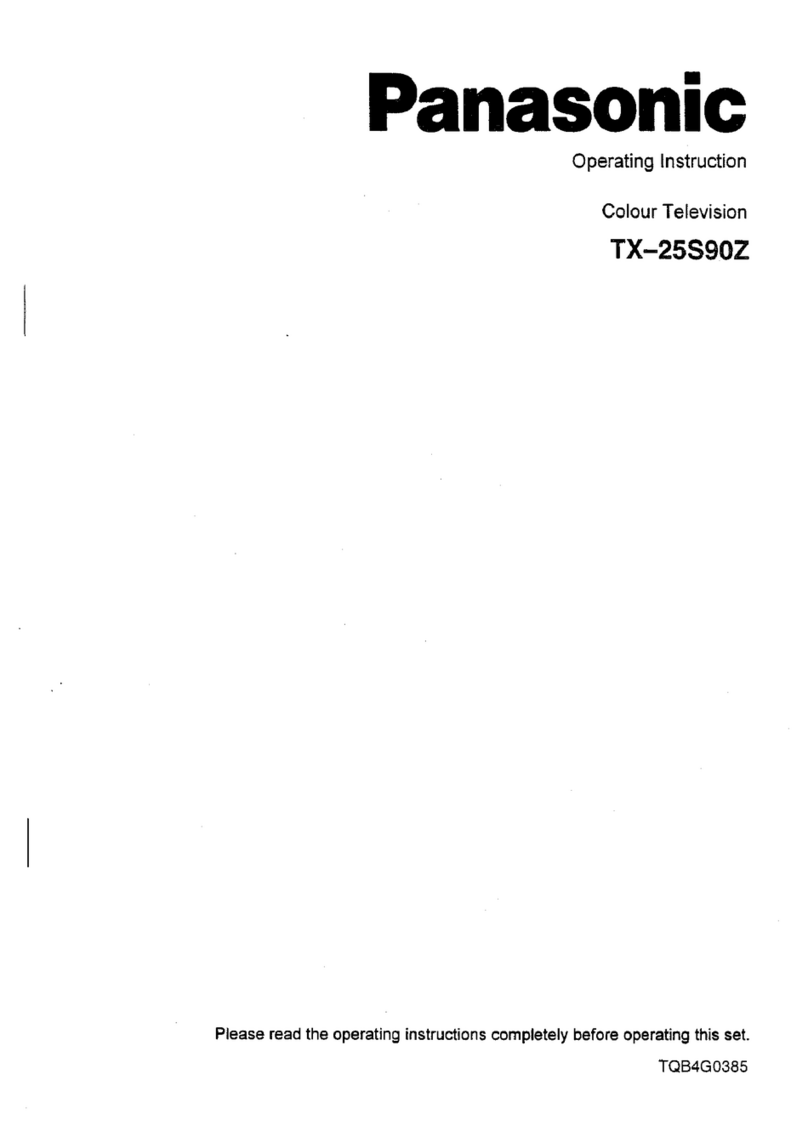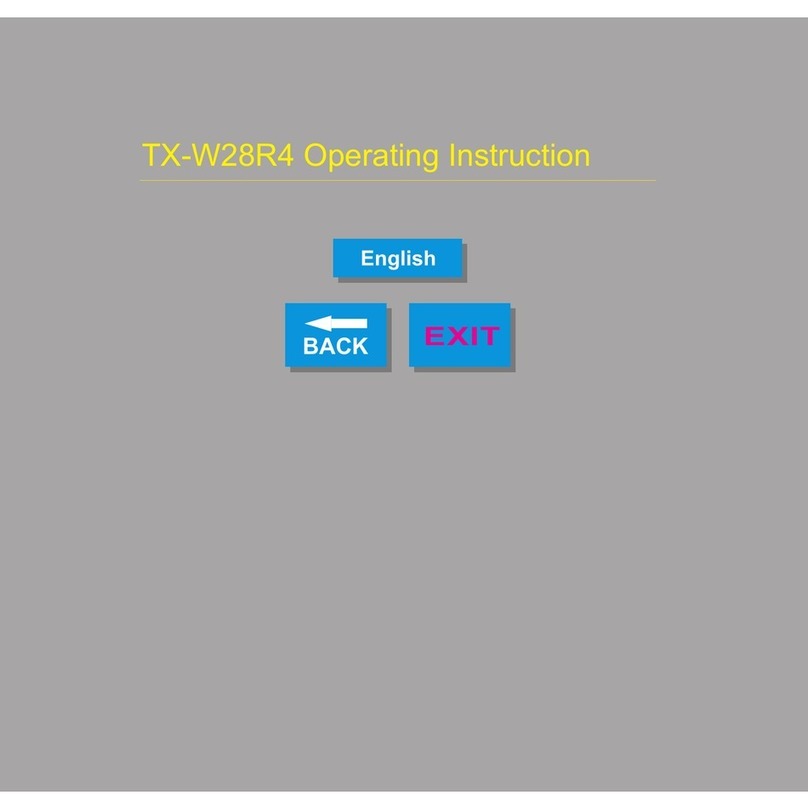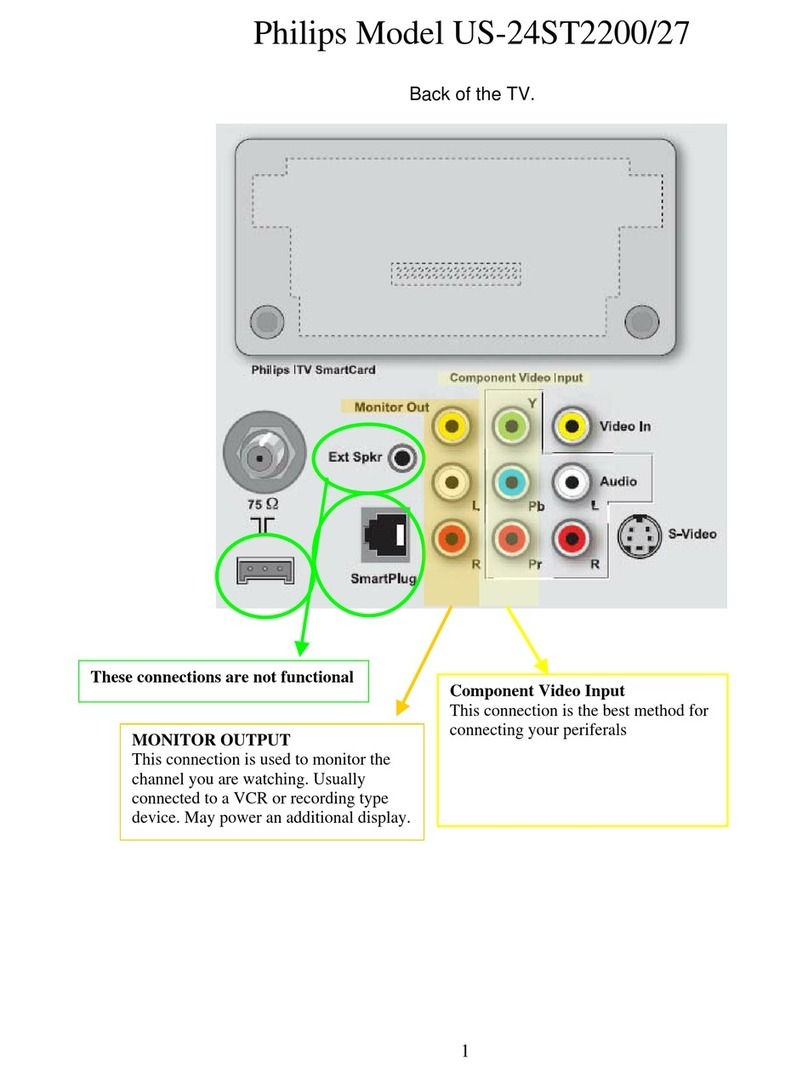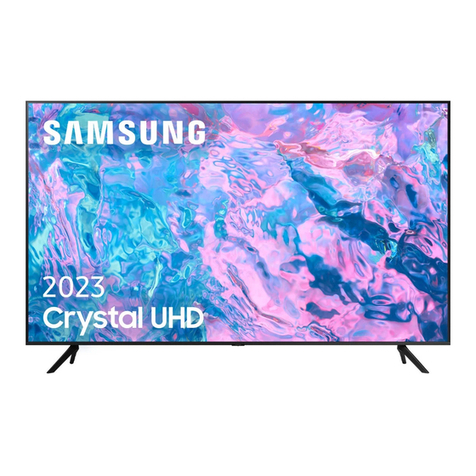Admiral cs322C3 User manual

TODTL IDTNTITICAIION CHART
MODEL
NUMBERS CHASSI5 MODEL
NUMBERS CHASSIS
C3ZZCz
CS3?,ZCZ
C3Z?,C3
cs3z.z.c3
C3Z?,Q16
cs322C l6
C3ZZCTT
CSSZ?,C11
c3?.zcz6
29ZI
EgSZI
29z;,1
ZgSZI
ZgZL
Z9SZI
ZgZL
Z9SZL
Z9.ZL
QS3?,ZCZ6
C32ZCZ7
cs3zzc?7
LC3?2C36
LCs3ezc 35
LC3ZZ,C37
LCS322C37
LC3ZZC39
LQ,3ZZC39
Z9SZI
zgzr
ZgSZL
Z,9ZIB
ugszlB
ZgZLB
LgSZLB
?9ZIB
z95ZlB
TABII OT (ONTTNTS
SPECIFICATIONS
IIITPORTANT SET.UP HINTS
PRECAUTIONS
PRELIMINARY SER,VICE ADJ.
ADDITIONAT SERVICE ADJ.
SET.UP ADJUST'IIENTS
COLOR PURITY
CONVERGENCE
TOUCH.UP OF PURITY
TOUCH.UP OF CONVERGENCE
BTACK & WHITE TRACKING
CIRCUIT DESCRIPTION
B L OC K D I AGRAIVI .2921 CH ASSI S
ALIGNTYTENT
TROUBLE SHOOTING CHAR,T
CHASSIS PARTS LIST
CABINET PAR.TS LIST
SCHEMATIC-TUNER
TUBE LOCATIONS
VOLTAGE & WAVEFOR.frT DATA
SCHEfrTATIC DIAGRA}TS
E"
rr
rt
n,
E
r
E'
B
E
E
Iil
wI
E
Etr
EI
E,t
E'
ql
q1
@l
:;
BI

Pege 2
SPECIFICATIONS
PICTURE TUBE
Type 2LAXPZZA round 21't three gun shadow rnask type--alurninized tricolor phosphor
screen. Magnetic deflection--rnagnetic convergence--electrostatic focus.
OPERATING VOLTAGE
110-120 volts, 60 cycles, AC only
WATTAGE
380 watts
INPUT IMPEDANCE
300 ohrns balanced to ground.
ANTENNA
See TIANTENNA REQUIREMENTSTT on page 4.
IF T'REQUENCIES
Intercarrier IF: Video 45.75 MCi Sound. 4L.25 MC
Sound IF: 4.5 MC
FUSE LOCATION
See rrTube"Location Diagrarn'r on page 56.
IUBE COiTPLEMENT 2921
vI0l
Y102
v20l
YZO2
YZo3
YZ04
vzoS
YZ06
v301
v302
v303
v401
Y402
v403
Y404
6BN4 VHf'RF Arnp.
6CG8 VHF Mixer-Osc.
6AZ6 tst IF Arnplifier
5826 2nd IF Amplifier
6826 3rd IF Amplifier
6CB5 4th IF Arnplifier
LZBYT Luminance (Y) Arnplilier
6au6 Gated AGC
5UB Sound IF. - lst Audio Arnp.
6AL5 Ratio Detector
6V6cT Audio Output
6AW8 lst Chrorna Arnp. -Color Killer
5CL6 Chrorna Amplifier
LZB}IT Chrorna Demodulator
?LAXPZZA Picture Tube
V501 5BH8 Burst Amp. -Pulse Shaper
V502 6AL5 Color Phase Discrirninator
V503 6U8 3.58 MC Osc. - Osc. Control
V601 6CS6 Sync Separator
V602 6CG7 Sync Inv. - Vert. Osc.
V603 6AQ5 Vertical Output
V604 6CGZ Horizontal Oscillator
V605 5CB5A Horizontal Output
v606 6AU4caA Damper
Y607 IYZ Focus Rectifier
V608 3A3 H. V. Rectifier
V609 6BK4 Shunt Regulator
V701 5U4GB L. V. Rectifier
V702 5U4GB L. V. Rectifier
TUBE COiTPLE}TENI 29ZIB
Chassis Z|ZLB uses the sarne above tube cornplernent but with the following exceptions:
Tube type 6BV8 -- Ratio detector and separate additional audio amplifier.
Tube type 6L6GB -- Audio Output.

Poge 3
TUBE CO}TPLEMENT 29SZI
Chassis Z?SZL uses the sarne tube cornplernent as 29Zl but with the following addition:
Tube type 6Af'4A -- UHF Oscillator.
TUBE CO'IIPLEMENT 29SZIB
Chassis Z9SZLB uses the sarne tube cornplernent as 29218 but with the following addition:
Tube type 6AF4A -- UHf' Oscillator.
IMPORTANT
COLOR R.ECEIVER SET.UP
HINTS
flM[:*,yl,,,;Ti::""x;'."",1ffi il""i?[#"J.":?*."1?#",I]"i.ii,1x;
understanding the lirnitations of present day design will enable you to fully acquaint yourself
with the color receiver.
Tll€ll read the "PRELIMINARY sERVICE ADJUSTMENTS" on pase ?, turn on
J '.2t- the receiver, and deterrnine which service adjustments are necessary.
These adjustrnents should be rnade before the I'COLOR SET-UP ADJUSTMENTS".
llufi ':"fiffi 'iJ,:";";'.'r:;J;si";Tlr;T;.i;ilTi'J1'"T';;;:'i
first read completely, it will be easier to decide what adjustrnent is necessary. The
uprt and [cornpletetr procedures are outlined under this section.
KNOW THE COTOR RECEIVER
IMPORTANT: The following data should be read
cornpletely before rnaking any color set-up adjust-
ments.
I N SI A t L AI I O N RE Q U I R E M E N I S
The color receiver should be placed away frorn bright windows or lights. Sorne light in
the roorn is desirable but should not fall directly on the screen. Receiver should always
be viewed in a roorn with low light 1eve1.
Allow for adequate ventilation. Receiver should be placed away frorn radiators, heat-
ing vents, etc. Do not place too close to walls.
Be sure receiver is conveniently located near electrical outlet and for antenn& conn€c-
tion.
IMPORTANCE OF DARK AREA FOR SEI.UP ADJUST}TENIS
Since ultirnately, the fidetity of color reproduction is dependent upon the accuracy of the
convergence and purity adjustrnents, these adjustrnents should be rnade in a darkened room
with the receiver in the sarne location and position as used for viewing. Window shades,
venetian blinds, etc. should be drawn or closed to eliminate as rnuch light as posslble. If
enough light cannot be elirni.nated, the color receiver shouldg!b. set-up in that area or
roofiI. A large cardboard carton or cloth shroud can be placed over the cabinet to darken
set-
I are
'rtouc}r
t
t

Poge 4
the screen for ease and accuracy in perforrning adjustrnents. It is preferable that the ad-
justments be rnade with the receiver in the location where it will be used. However, ad-
justments rnust be checked and readjusted if necessary, with the receiver in the final loca-
tion, position, and with the sarne light conditions under which it will be viewed. This is
necessary because of the affect of the earthrs rnagnetic field and other external rnagnetic
fields upon color purity and convergence. For exarnple, a color receiver that is properly
adjusted facing a particular direction, rnay reproduce faithful colors. If this receiver is
turned or ry1! to face in another directlon, purity and gyg.ry, rnay now be out of ad-
justrnent. The extent of the effect of rnoving the receiver after if is set up will vary from
set to set and location to location.
TIMITS OF PURITY AND CONVERGENCE
Perfect convergence norrnally cannot be obtained over the entire screen area. Picture
tube and deflection yoke developrnent of present-day design lirnit this condition, but it
should be understood that with careful and accurate adjustrnents, a very good convergence
covering at least 85% of the screen area can be achieved.
Good convergence in the four corners of the raster rnay not be obtained, but if..85% (plus or
rninus 5%l of. the total area is accurately converged, this is considered a norlTral, acceptable
condition.
The present-day color picture tube also lirnits color purity. I4rith careful and accurate
adjustments, good color purity can be achieved for each o{ the three fields with good black
and white reproduction. Very smalL areas of irnpurity at any of the four corners 6r sides
of the raster are considered acceptable.
BTACK AND WHlTE TR,ACKING
The black and white tracking adjustment is another irnportant consideration. If properly
rnade, the color set will produce black and white pictures within the norrnal useable range
of both lhe Contrast and Brightness controls. If the adjustrnent i" ir,Effii,TGtiE[T.-
ture wllI appear tinted and the color will vary at different Brightness and Contrast control
s etting s .
Cornplete TTBLACK AND WHITE TRACKING'| instructions are contained in the "COLOR
SET-UP ADJUSTMENTS" on page II.
DEATER AND CUSTO}TER INSTRUCTION
The Operating Instructions packed with the receiver should be reviewed with all those
who will operate and use a color television set. The expected perforrnance and lirnita-
tions of the color set should also be explained to the dealer or customer. This will help
thern rrunderstandrt their color receiver.
DEMAGNETIZING IHE COLOR PICTURE TUBE
Satisfactory purity and/or convergence of a color receiver rnay be difficult or irnpos-
sible to obtain if the metal parts of the picture tube or chassis have become magnetized.
Therefore, a dernagnetizing or degaussing procedure should be perforrned before making
the Color Set-Up Adjustrnents. Instructions on how to make a dernagnetizilrg coil are given
under "DEMAGNETIZING COIL" on page 49.
ANTENNA REQUIRTMENTS
The antenna requirernents for color reception are rnuch rrrore critical than for black and
Y(
Y(
Y

U
Poge 5
white reception. tr'or best color reception, a broad band antenna should be used. It should
also have an essentially flat frequency response characteristic across the frequency range
of the desired channel. Some antennas of the 'rYagitr type do not rneet these requirernents
and should not be used. Built-in and Indoor antennas !o 4ot rneet these requirernents and
should not be used.
The CONICAL type antenna is a good choice for color reception.
Antenna orientation is also rnore critical than for black and white reception. Sorne an-
tenna positions rnay provide adequate black and wh:ite reception, but poor color reception.
If color reception is poor, and the receiver is operating properly, the antenna ehould be
oriented for best color reception while receiving a color program. If several stations are
received frorn different directions, an antenna rotator rnay be required.
Multiple antenna installations, particularly those ernploying distribution arnplifler sys-
terns, rnay not provide satisfactory eolor reception. Many TV boosters do not have suffi-
cient bandwidth for color reception.
Standing waves present on the antenna lead-in can also result in poor color or no color
reception. The lead-in should be properly rnatched to the r"ceivurFelkninate tffi condi-
tion. To deterrnine if standing waves are present, any one o{ the two following rnethods can
be used:
METHOD 1. Insert a LZ db pad between receiver antenna terrninals and lead-in as
shown in Figure 1, or,
METHOD 2. Slide a piece of tlnfoil (wrapped around the lead-in) atong the lead-in.
260 0}lrs
t?
GENERATOR
OUTPUT 500 oHIs 500 o}lrs
TO
RECEIVER
ANTENNA
TERMINALS
+21I
200 0}lrs
Figure 1. 12 db Pad.
In either of the above two rnethods, if the signal increases in lntensity, it'is an indica-
tlon that standing waves are present.
lf signal intensity does not irnprove, rernove pad or tinfoil and. reconnect antenna lead-in
to set. I{ poor or no color reproduction is stilI experienced, the receiver or antenna ehould
be checked further.
If signal intensity does irnprove, and METHOD l was used, leave pad connected.
lf METHOD 2 was used, slide foil along lead-in until best picture is obtained. Fasten
foil on lead-in with tape at that point.
U

Poge 6PRECAUTIONS
HANDTING OF CHASSIS
The picture tube used in this chassis is rnuch rnore fragile than any black and white pic-
ture tube. The possibility of accidental breakage is increased because of additional assem-
blies mounted on the neck of the tube. The foltowing precautions should be taken.
t. It is irnportant that ehatterproof goggles, heavy gloves and a protective apron be
worn while handling or installing a picture tube.
2. Do not slide the assernblies rnounted on the neck of the picture tube hastily or care-
lessly, and without observing the procedures given.
3. Scratching, burnping or excessive pressure on the picture tube can result in an ex-
plosion of considerable violence.
The circuits of this chassis are more nunierous and cornplex than in black and white re-
ceivers. Rough or careless handling increases the possibility of accidental circuit faiLures.
HIGH VOLTAGE WAR,NING
Very htgh voltage is present at sorne points in this receiver. The 20,000 volt high volt-
age regulated supply has sufflcient energy to cause severe injury or death.
It ls irnperatlve that the following high voltage precautions be observed.
1. Operation of the set outside of the cabinet or with the cabinet back removed is a po-
tentlal shock hazard.
Z. Severe shock can result without rnaking physical contact with any high voltage
sources. At all tirnes when the receiver is operating, keep at least 3rr away frorn
all points where high voltage is present.
3. This set usea a rnetal coned picture tube that is protected by a covering insulator
(boot). At the front edge of the tube near the rnetal-to-glass seal , there is consid-
erable shock hazardwithln a distance of approxirnately 3'r frorn this edge.
X.NAY WARNING
'When the set is operating, the screen of the picture tube radiates soft X-Rays. These
are norrnally absorbed in the safety glass front, but operation of the receiver outside the
cabinet leaves the screen unprotected. This results in a focal point of these X-Rays at a'
bout 9r'in front of the central screen area. Exposure within this area for more than l7
hours a week inay cause physical injury. The X-Rays are weaker around the edge and
sldes of the tube. Physical exposure time around this area is unlirnited.
When maklng adjustrnents with an r.rrprotected picture tube, avold rernaining in the area
directly ln front of the plcture tube for rrrore than the 17 hours per week tirne lirnit. If it
becornes necessary, slrield the front of the tube with plate glass (at least l/4" thick). Thls
will absorb all X-Rays from the front area of the screen.
Y(
t(
U,(
"t

I
t
Poge 7
PRELI'WNARY SERVICE ADJUSTMENTS
It is lmportant that any prelirninary service adjustrnents be rnade before the color set-up
adjustrnents to prevent upselting color purity or convergence.
Carefully check, and if necessarlr rnake the following adjustrnents in the order listed be-
Iow.
CHANNET STUGS
The setting of the Fine Tuning control and Channel Slugs are rnuch more critical for col-
or reception.
Be sure the correct point of tuning, as described below, oscurs at approxirnately rnid-
rotation of the Fine Tuning control.
IMPORTANT: If the Channel Slug or Fine Tuning
control is slightly rnisadjusted for a black and
white prograrn, the picture and sound rnay still be
acceptable. With the same Channel Slug and Fine
Tuning control setting for a color prograrn, the
picture rnaygg! E t. color.
The customer should be farniliarized with the irnportance of correctly setting the Fine
Tuning control.
If Channel Slugs need adjustment, proceed as follows:
A. Turn on set. Allow 15 rninutes for warrn-up.
B. Tune in station and set for norrnal picture and sound.
C. Set Fine Tuning control at approxirnately rnid-rotation.
IMPORTANT: See f igure 2 for position of Fine
Tuning carn for rnid-rotatlon setting. When carn
is in thls posltLon, Fine Tuning control is at rnid-
rotation.
D. Rernove Channel Selector and Fine Tuning knobs and insert a Lf 8" blade, flexlble
non-rnetallic tool through the hole adjacent to channel selector shaft. See f igure
z,
E. For each channel, carefully turn Channel SIug until sound bars appear in plcture.
Then turn slug toward best picture until sound bars just disappear.
Caution: Only slight rotation
of slug is necessary. Turn-
ing the slug clockwise too far
will cause it to fall into the
coil.
Figure 2. Front View of Tuner
Showing Mid-Rotation of Fine
Tuning Control.
f
?
CHANNEL SLUG
ADJUSTMENT
t1

Pege 8
HORIZONTAL SNYC
The picture should rern,ain in sync throughout the range of the Horlzontal Hold control,
even when interrupting the signal by switching on and off station. See Figure 3 for location
of Horizontal frequency control.
The HORIZONTAL SYNC adjustrnent is per{orrned the sarne way as on a black and
white receiver using the rnultivibrator and discriminator rnethod for horlzontal sync and
sweep. For exarnple, all 20Y4 series black and white receivers use this rnethod.
RASTER TItT ADJUST}IENT
If raster is tilted, loosen the @g wing bolts (A) (see Figure 3) and rotate yoke until
picture is straight. Tighten the wing bo1ts.
Note: tr'igure 3 shows the location of only two wing
bolts (A). The third is located on the sarrre bracket
directly underneath the picture tube neck.
HEIGHI AND LINEARITY
These adjustrnents are adjusted the sarne way on the color receiver as on a black and
whlte receiver. Be sure to adjust for best height and linearity with the picture set at ap-
proxirnately llZt' beyond the top and bottorn lirnits of the rnask. The HEIGHT and LINEAR-
ITY controls are located behind the rernovable panel under the safety glass frarne. Re-
rrrove the four screws frorn under bottorn edge of the panel. Panel can then be easily re-
rnoved. Adjusting HEIGHT and LINEARITY after color set-up adjustrnents rnay upset color
purity and convergence. Flowever, if only a slight touch-up is necessary following color
set-up adjustrnents, the effectEy be negligible.
HOR!ZONTAt DRIVE
Adjust the HORIZONTAL DRIVE control to a point where the white vertical line(s) just
disappear, or to rna><irnurn if drive lines do not appear. See Figure 3 for control location.
Ma<irnurn drive is at rnaxirnurn (cornpletely clockwise) rotation of the control.
HORIZONTAL AND VERTICAL CENTER.ING
Adjust for proper horizontal and vertical centering. See Figure 3 for control locations.
(
(

l}
rll,
WNG
BOLT
Poge 9
TYING
tsOLT
@
WING
BOLT
HORTZ.
NEARITY
FOCUS
@
WING
BOLT
.t
,1,:.: trt'tj:i!,li:il:!ll:a,,irj:
:.-:::::-:ra:::ri:!i:,.4 j c;!r'
:i r'i:l:ii.lli:i:lef !iia:i:l::;!:.
':.:.r :;r :r:.:ii.r:!t1t1{1ij:
rii: !,-:i:,i.:rirrielr::r!$;1r.
:iu:1i!i;1iiN.,:;!:.45;d
ffi"} ..'r
E#Sl .',
lrr:i;;l.,:t;I::tti:::i;i:ti:
rt:tr i:da!ii!i:!iii:::j:i!r ti;;l:t i
HORTZ.
CENT.
@
tO
@
9FUSES
Figure 3. Top Rear View of
COLOR STRIPE
TEST
Chas sis Showing
VERT.
CENT. HOR rZ.
SYNC. HOR rZ.
DR!VE
Adjustrnent and Control Locations.
:

Poge l0 ADDITIONAL SERVICE ADJUSTMENTS
REQUIRING TEST INSTRUMENTS
The {ollowing test lnstrurnents are required for the
1. VTVM with 30 KV high voltage probe'
Z. Milllarnrneter (0 - I rna range).
3. Milliarnrneter (0-500 rna range).
HORIZONTAL TINEARITY
following adjustments.
Hfi ffi :,,""1::";:"#*E'ff;:'rJiHxili,
controlonthecolorreceiverisrnuchrnorecritical
and requlres a different adjustment procedure' Mis-
adjustrnent of the HoRIzoNTAL LINEARITY control
onacolorreceiverwillhaveverylittleeffectupon
the actual horizontal llnearity, but can result i'44-
ggg to the 6CB5A (horizontal output tube) or associated
colrpon"nt". For this reason, the adjustnle-nt iF accu-
.rtuiy@v@]Jv should not re-
iffim'ffi,,IjriJ"''
.oiI , "t.. in the field rnay require adjustment of the
HORIZONTAL LINEARITY control by the service
technician. If adjustment is required' the follow-
ing method is recomrnended'
Note: A DC milliarnmeter (0-500 ma
range) is required for this adjustrnent'
Adjust as follows:
l. Rernove fuse, F604 frorn its holder. See "Tube Location Diagrarnil page 66 for
fuse location.
z. Insert a Dc rnilliarnrneter between fuse holder terrninals (positive terrninal of
rneLer connected to toP caP)'
3. Tune in Black and white picture. Adjust BRIGHTNESS, CoNTRAST' FOCUS' vER-
TICAL, and HORIZONTAL controls for a norrnal picture' i ,, :.-
4. Adjust the HoRIZoNTAL DRIVE control to the point where the vertical drive line(s)
justdisappears,oratrnaxirnum(clockwise)ifnodrivelineispresent.
5. Adjust the HoRIZoNTAL LINEARITY control for minimurrl current reading' (Mini-
rnurn cathode current of horizontal output tube)'
Repeat step 4 for optirnurn drive setting'
AdjusttheHORIZoNTALCENTERINGcontroltocenterthepicture.
{
6. U

T
il
i;
rI
Poge I I
HIGH VOLIAGE REGUTATOR. HORIZONTAL LINEAR'ITY
A line voltage of I 1? volts should be rnaintained during this adjustrnent. See Figure 3 for
adjustrnent locations .
?
Caution: Milliarnmeter leads will be at B p}us potential
(380 volts). Be sure to isolate rneter frorn chassis'
10. Readjust the HoRIZONTAL LiNEARITY coil in the direction o{ less inductance,
(slug moving outward frorn coil) until the cathode current of the Horizontal Output
tube is approxirnately 200 rnilliamperes. Do not exceed 210 rnilliarnpeles as lin-
earity is disrupted above this value of current. The High voltage should read in
the range o{ tg.5 to ZL.5 KV, with regulator current of 750 to I000 microamperes'
optirnurn setting is 200 rnilliarnperes output tube current with 20 KV high voltage
and regulator current of 950 rnicroamperes'
For line voltages between 105 and 11? votts, adjust HORIZONTAL LINEARITY
control accordingly. For exarnple, aline voltage of 110 volts results in a ratio
of I10 llLT or.9i (r"irrg 117 volts as standard). Therefore, the high voltage would
be set at. .g4 x 20,000 volts or 18,800 volts. Maxirnurn Horizontal Output tube cur-
rent becornes .94 x 210 rnilliarnperes or 19? rnilliarrrperes and rninirnurn optirnurn
regulator current .94 x 750 rnicroarnperes'
Rernove rneters and replace test jurnper wire and fuse' Repeat steps 4 andT if'
necessary. overscan should be approxirnately I Ll4 inch each side"
Il. Recheck vertical height and linearity. Overscan should be at least LIZ incln at top
and bottorn.
8. Set the BRIGHTNESS and CONTRAST
9. Connect a DC rnilliarnrneter (0-1 rna)
6FK4 regulator tube (positive lead to
.rneter insertion.
IMPORTANT: Before
adjustrnents (Purity or
you have.
controls to minirnurn, ( for bearn cutoff).
in series with the cathode (Pin #i) of the
cathode). A test jumper is provided for
rl7
o
@
o
@
o
COLOR. sET - UP ADJUSTMENTS
rnaking any color set-uP
Convergence) be sure
read page 3, "IMPORTANT COLOR SET-UP HINTS", and followed through with the
instructions,
checked and rnade any necessary prelirninary service adjustrnents,
checked the receiver f6r perforrnance after the prelirninary service adjustrnents,
read this section cornPletelY,
decided whether the color receiver needs a rttouch-up" of so ne color adjustrnents or a
ncornpleterr color set-up adjustrnent'
U

Poge 12
A "cornplete'r color set-up adjustrnent consists of the following steps in the order given.
I CENTER STATIC CONVERGENCE (DC). See Figure lr.
II COLOR PURITY
III CONVERGENCE
IV TOUCH-UP OF PURITY
V TOUCH-UP OF CONVERGENCE
I
VI BLACK AND WHITE TRACKING (Good black
of the Brightness control)
If the receiver requires a trcornpleterl
set-up adjustment, rnake all adjustrnents
listed, including the 'rtouch-up'r adjust-
rnents "
If the receiver requires only a
rrtouch-up" of sorne color adjustrnents,
rnake those adjustrnents only.
Check the {ollowing parts for cor-
rect positioning. See Figure 4.
ASSEMBLY
PURIFYING MAGNET
DEFLECTTNG YOKE
Figure 4. Si.de View Showing the Relative
Placernent o{ Neck Cornponents.
and white
RADIAL-
CONVER6ING
MAGNE T
hout
9
RAL-
;RGING
NET
the range
I
I.
z.
BtUE TATERAL MAGNET ASSETIBtY
The rnagnet within the sma1l circular holder (in the assernbly) should be over the
lateral converging pole piece, approximately at a two orclock position as viewed
from the base end of the picture tube.
The assernbly stides along the neck of the tube sirnilar to an ion trap rnagnet
on a black and white receiver.
PURITY RINGS
The PURITY RINGS should be positioned
grid ff4 of the electron guns. The pURITy
CONVERGENCE YOKE ASSE'ITBtY
over the opening between grid f3 and
RINGS slide along the tube neck.
This assernbly should be positioned so that its pole shoes are directly over the
pole pieces in the electron guns. The inside of the tube neck surrounding these
pole pieces is covered with Aqua-Dag rnaking it irnpossible to see thern. However,
the pole pieces are located just in front of thl targe circuLar disc which is visible
when the tube neck is viewed frorn the socket end.
If necessary to re-position the assembly, slid.e or tu3:n on neck of tube. Be cer-
tain that the bottorn of the assernbly is horizontal.
'When correctly placed, the center-line of the core associated with the blue gun
should be approximately I 5/8 inches in front of the center-line of the lateral-
converging internal pole pieces. u

Poge 13
DEFLECTION YOKE
CONVERG.
YOKE POLE
PIECES
PURITY MAGNET
BLUE BEAM
LATERAL MAGNET
/:.
-1 &
tla
Figure 5. Transparent View of Neck of Picture Tube Showing Correct Positioning of
Parts, Adjustrnent Locations and Identification.
o
(o
(o
o
D
t
'1
i
I
I
I
GRILL CLOTH COVERED PANEL
(SLIOES DOWN AFTER SCREWS
HAVE BEEN REMOVED)
ANGLE AT WHICH
MUST BE SCREWDRIVER
USED.
ru POSTTTON
OF SCREWS
rD
Figure 6. Front Panel Rernoval .

Poge 14
4. DEF TECTION YOKE
The DEFLECTION YOKE is autornatically centered about the neck of the tube d.ue
to the yoke and picture tube rnounting rnethod. Norrnally, yoke centering need not be
checked, but if it becornes necessary due to difficulty in rnaking color adjustrnents
or if the receiver requires aricornpleterrcolor adjustrnent, perforrn the following
steps:
a' Slide BLUE LATERAL MAGNET and PURITY RINGS toward base of tube neck.
b. slide CONVERGENCE coIL ASSEMBLy toward base of tube.
c. Check yoke centering about neck of picture tube.
lf yoke is not centered. and yoke brackets are not dented, etc., check the two
hex nuts "G'r under the yoke to be sure they are tight. see Figure 5. (Figure 5
shows location of only one hex nut ,Gtr. The other is in sarne position on oppo-
site side of bracket. ) AIso check picture tube mounting rods. See ,REMO1;AL
OF PICTURE TUBETT on page 48 {or rnounting rnethod, etc.

I
1
{
Poge 15
COTOR PURITY
Before adjusting for color purity, it is recomrnended that the magnetlc parts of the pic-
ture tube be dernagnetized.. If any parts of the picture tube have become rnagnetized, puri-
ty or conv.rgurr". rrray be difficult. FuII instructions are given below. (See page49f'or de'
rnagnetizing coil construction procedure. )
DEMAGNETI ZING IN SIR UCIIONS
I. With receiver off , place in sarne position toward you as for viewing. Rernove the screws
from the strip of wood at the top of the safety gIass. Rernove safety glass and rnask'
Z. pull lhe rirn rnagnets all the way out into their shields; else the dernagnetizing coil rnay
dernagnetize tirre rirn rnagnets" See I'igure ? for rirn rnagnet locations.
3. Place the coil around the picture tube at the face plate. Energize the coil'
4. Keep the coil positioned around the picture tube for at least one rninute, and then slowly
withdraw the coil to a distance of 15 feet or rnore, keeping the plane of the coil parallel
to the picture tube {ace plate at all times.
5. If irnpossible to back off to 15 feet, this distance can be simulated by withdrawing the
coil to a distance of about 5 feet and then gradually reducing the coil supply voltage to
zero by use of a Variac or sirnilar device.
6. Repeat steps 3 through 5.
CHECK ond ADJUSI COtOR. PURIf Y os follows
I. If {ront panel has not been rernoved, rernove the four screws frorn under the rernovable
panel (covered with grille cloth on rnost rnodels) located on front of the set, directly un-
der safety glass frarne. See Figure 6. The panel can then be easily rernoved' (Do not
replace panel until all color adjustrnents have been cornpleted. )
Z. With receiver on, turn CONTRAST to rninirnurn and BRIGHTNESS to near rnaxirnurn
(see Figure 8 ).
3. Turn RED, GREEN and BLUE SCREEN, and GREEN and BLUE GRID controls to rnini-
rnum. See Figure 9-
4. Turn RED SCREEN to provide a bright raster. Observe field purity of red raster.
Note: If @lI areas of irnpurity are noticed only
around-4gSg of raster, a rrtouch-up" of purity
should be tried before proceeding with step 5. See
"TOUCH-UP OF PURITY" on Page 23.
If large areas of irnpurity are noticed around
edges, topr bottorn, or central areas, continue with
step 5.
5. Set alt six RIM MAGNETS to rninirnurn posltion (away frorn tube). See Figure 7 for
RIM MAGNET locatlons.
3
?
U

6.
Poge 15
Turn all HORIZONTAL CONVERGENCE
frorn the coil form end.s. See Figure I0.
7' Turn the YERTICAL CONVERGENCE AMPLITUDE controls counter-clockwise. Set
the VERTICAL TILT controls at rninirnurn (approxirnately rnid-position).
8' Set the PURITY MAGNET for minimurn magnetic field (colored tabs adjacent).
9. set all six RIM MAGNETS to rninimurn (away frorn tube).
STATIC CENTER DOT CONVERGENCE
t1.
App1y the signal frorn a white dot generator to the color receiver. Turn CONTRAST
control up to rnaximurn. Turn all SCREEN and all GRID controls to rninirnurn" Just
extinsuish the dot presentatlon with the brightness control. Then turn up the RED,
GREEN and BLUE SCREEN controls, and GREEN and BLUE GRID controls for equal
size small dots- The focus control rnay be reset to irnprove the sirnilarity of dot
shape.
Adjust the RED, GREEN, and BLUE Dc CONVERGENCE controls, and the BLUE
LATERAL MAGNET to produce one white dot at the center of the picture tube screen.
See Figure I 1.
AMPLITUDE and TILT controls 3/8" outward
See figure 9 for location of controls.
turning up the
and brightness
(
10.
lz.
13.
14.
15.
Alternately observe purity of the RED, GREEN, and BLUE FIELDS by
appropriate SCREEN and GRID controls (contrast conlrol at rninirnum
control near rnaxirnurn).
If any hnpurity exists continue with Step 13.
Loosen screws IBrr(see Figure 3). Move the yoke back and forth and rotate each pURI-
TY RING going back and forth frorn one to the other until the purest red. raster is ob-
tained over most of the screen area (particularly over the central , top, and bottorn
areas ).
Adjust the six RIM MAGNETS by rotating and pushing thern in and out until the rnost uni-
forrn red raster appears around the edge of the screen.
Check the green raster purity by turning the RED SCREEN control cornpletely to the left
and turning the GREEN GRID and SCREEN controls up to obtain a green raster. The
raster should appear green over the entire screen area. Turn the GREEN GRID and
SCREEN controls cornpletely to the left and turn the BLUE GRID and SCREEN controls
up to obtain a blue raster. The raster should appear uniforrnly blue over the entire
screen area.
16. Tighten screws rrBrr.
17. Repeat static center dot convergence (step11). Ifapure red, green andblue raster is
not obtained, the picture tube rnay not have been cornpletely demagnetized. Repeat DE-
MAGNETIZING procedure and pURITy adjustments.
18. Recenter the raster with the centering controls when necessary.
(
Note: If individual pure rasters are still not acceptable,
a cornprornise purity adjustrnent should be rnad.e. (

(}
?
TUNER
MOUNTING
BRACKET
ANTENNA
TERMINALS
RETAIN!NG
RODS
CONVERGENCE
YOKE PLUG
& SOCKET
GROUND SPRING RIM MAGNET
Poge 17
NUT PLASTIC BOOT
RETAIN ING
ROD NUTS
RIM
MAGNETS
SPEAKER SOCKET
HIGH VOLTAGE INTERLOCK
( MOUNTED BEHIND
SAFETY GLASS. )
o,
rO
(o
o?'.['..ttJl?,[
& SOCKECT
Figure 7. Right Rear View o{
H IGH VOLTAGE
CONN ECTOR
Chassis Showing Control Locations.

Poge 18
CONVERGENCE
convergence is necessary so that the Red, Green and Blue Bearns are
rnuch of the screen area as possible. converged over as
In general, very good convergence can be achieved over
screen area.
A. TEST EQUIPMENT
85fl0 (plus or minus 5a/o) of. t]ne
A suitable W'hite Dot Generator (such as ADMIRAL Model TE-100) is necessary for
CONVERGENCE adjustrnents. See ',TEST EQUIpMENT,, on page 3g.
B. LOCATION OF CONTROLS
The STATIC Convergence controls are located on the fronl apron of the chassis
and the Blue Lateral Magnet in its holder on the tube neck. See Figure 5.
The DYNAMIC Convergence controls are located on the front apron of the chas-
sis. Rernove the four screws frorn under the rernovable front panel for access to
controls. The panel is then easily rernoved. Identification of these adjustrnents is
indicated in Figure 9 and on a label on the chassis apron.
ThC Effects o{ the HORIZONTAL and VERTICAL AMPLITUDE controls and
TILT controls are indicated in Figure 12. The HORIZONTAL TILT adjustrnent for
I
(
OFF-ON
VOLUME BRIGHTNESS CHANNEL
SELEGTOR
CONTRAST
TONE
HORtZ.
HOLD
COLOR
INTENSITY
COLOR
FIOELITY
VERT.
HOLD (
Figure 8. Right Front Yiew of Chassis Showing Location of Operating Controls"
L

?
lU
Poge 19
each color will cause the peaks of the horizontal waveforrn, forrned when the HORI-
ZONTAL AMPLITUDE controls are advanced fu1ly to the right, to rnove frorn side
to side.
C. SET-UP PROCEDURE
Apply the white d.ot signal to the receiver. See step 10 under PURITY.
Note: Adjust the three guns to provide dots of intensity
d.istinct enough for viewing and equal in size, but of low
enough intensity to keep the dot size at a rninirnurn. Very
low ambient light conditions are recomrnended.
iMPORTANT: If only a touch-up of convergence is needed, do not perforrn the following
3 steps.
1. Set all VERTICAL TILT controls to the center of their rnechanical rotation range (zero
saw waveform applied to convergence coils).
Z. Set all VERTICAL AMPLITUDE controls cornpletely to the 1eft, (minirnurn waveforms
applied to convergence coils).
3. SEt A11 HORIZONTAL AMPLITUDE ANd A11 HORIZONTAL TILT CONtTO1S (COTE StUdS)
3/8 inch oulward frorn each coil. See Figure 10'
STATIC
CONVERGENCE
CONTROLS DYNAMIC
C ONVERGENCE CONTROLS
1. RED DC
Z. GREEN DC
3. BLUE DC
4. BLUE LATERAL
MAGNET
1
Z
3
4
5
6
RED HORIZ. AMPL.
GREEN HORIZ. AMPL.
BLUE HORIZ. AMP.
RED HORIZ. TTLT
GREEN HORIZ. TILT
BLUE HORIZ. TILT
8
9
RED VERT. AMPL.
GREEN VERT. AMPL.
BLUE VERT. AMPL.
10" RED YERT. TILT
I1. GREEN VERT. TILT
LZ. BLUE VERT. TILT
E b d l$ ,b,5 d H H -hj'. $:3::A 6"Q]$
(D Figure 9. Location and Identification of Color Set-Up Adjustrnent Controls'

Poge 20
Figure 10. Preset Position of
The following four staternents
justrnents.
Horizontal Dynamic Controls Be{ore Beginning Cornplete
Convergenc e.
should be kept in rnind during the CONVERGENCE ad-
o-
o
{I
I. The purpose of the DyNAMIC controls is to forrn EeUAL SPACING between
the color dots in each TR.IANGULAR GROUP across as rnuch screen area as
pos sible.
The purpose of the STATIC controls is to converge each of these TRIANGULAR
GROUPS into oNE single dot across as rnuch screen area as possible.
The DYNAMIC voltages cause d.ifferent dot rnovernent over different areas of the
screen.
z.
3"
4, The DC CONTROLS cause sarrle d.ot movement over the entire screen
PRE t !TIII N AR Y CONVERGE N CE
area. (
I. Turn the RED, GREEN and BLUE DC
BLUE LATERAL MAGNET within its controls, and if necessary, turn the
holder to forrn white dots in the central
@@ @@
@@
BLUE,GREEN AND RED
DOTS SUPERIMPOSEO
area of the screen. See Fi.gure t l.
Caution: Do not turn or rotate the BLUE
LATERAL MAGNET ASSEMBLY.
Note: Either a cross hatch or dot video pattern can be used in the
following convergence procedure. The cross hatch lends it-
seLf better for rapid convergence, however for accurate final
adjustrnents, the dot pattern is rnore desirable.
Figure I 1. Red, Green,
and Blue Dots Converged
in Central Screen Area.
w
@4
@@ @o
--@+ (, w
@@
@
@@
@
@@
@
w
@@
@@@
@
@@
@
@@
@
OF
(
\-MOTION OF BLUE DOTS BECAUSE
BLUE POSITIONING MAGNEI
This manual suits for next models
15
Table of contents
Other Admiral TV manuals

